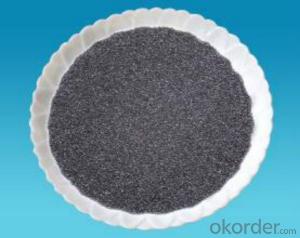Low S Calciend Petroleum Coke made in China
- Loading Port:
- Tianjin
- Payment Terms:
- TT OR LC
- Min Order Qty:
- 20.9
- Supply Capability:
- 2090 m.t./month
OKorder Service Pledge
OKorder Financial Service
You Might Also Like
Brief introduction
Calcined Petroleum Coke comes from delayed coke which extracted from oil refinery. Although Calcined Petroleum Coke contains a little bit higher level of sulfur and nitrogen than pitch coke, the price advantage still makes it widely used during steel-making and founding as a kind of carbon additive/carburant.
BaoSteel is world famous organization. This calcined petroleum coke's raw material is from Bao Steel, which has great quality guarantee. It is more and more crucial for the steel industry and inreplacable
Features
Our product has follwing advantages:
The morphology, chemistry and crystallinity of recarburisers
have a major impact on the overall casting cost. The combined
application and cost benefits, which are derived through the
use of Desulco, enable foundries to manufacture castings in a
highly cost effective manner.
reduces
Inoculant consumption
MgFeSi consumption
Furnace refractory wear
Scrap rate
Tap to tap time
Slag inclusions risk
Chill
increases
Casting microstructure
Productivity
Process consistency
Specifications
Products | CPC | ||
F.C.% | 98.5MIN | 98.5MIN | 98MIN |
ASH % | 0.8MAX | 0.8MAX | 1MAX |
V.M.% | 0.7 MAX | 0.7 MAX | 1 MAX |
SULFUR % | 0. 5MAX | 0. 7MAX | 1MAX |
MOISTURE % | 0.5MAX | 0.5MAX | 1MAX |
Pictures
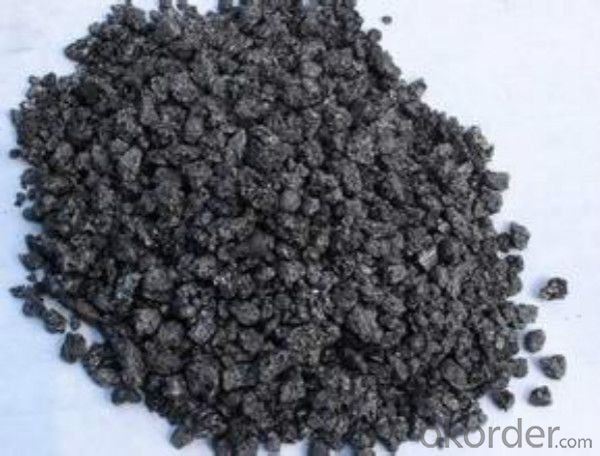
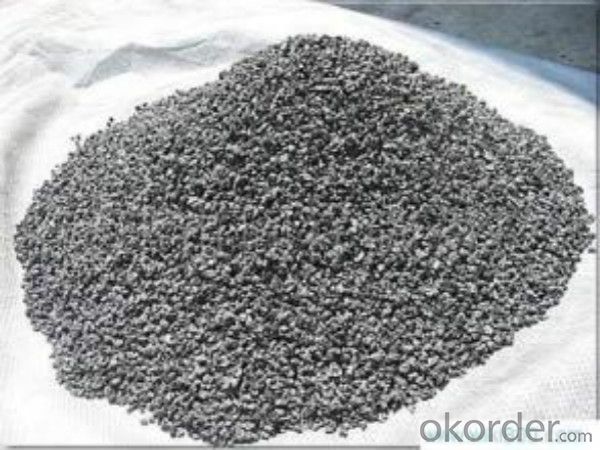
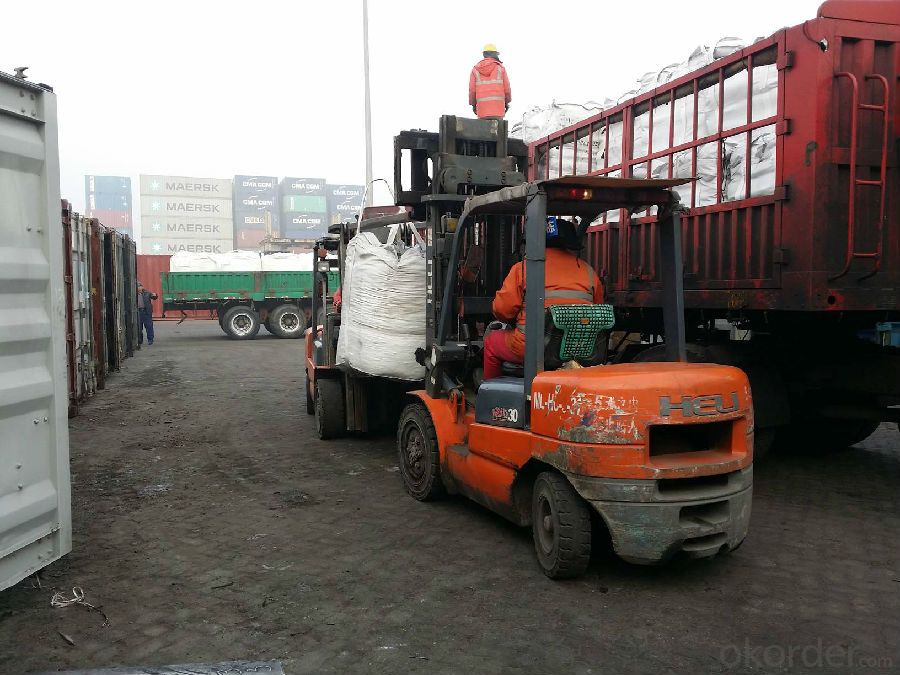
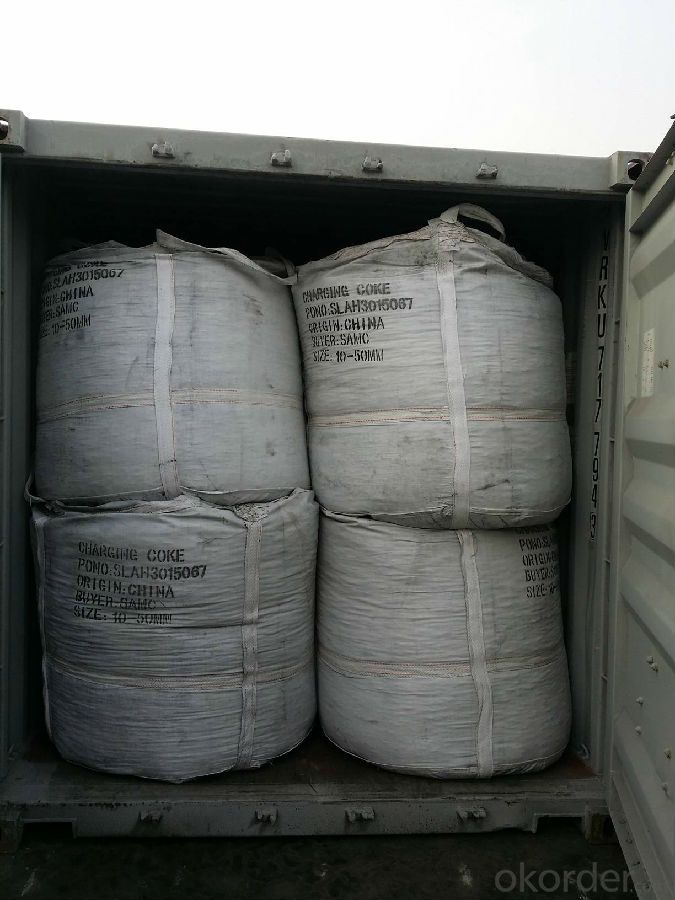
FAQ
1 What is the package?
In jumbo bag with/without pallet
2 What is the delivery time?
25 days after receiving the workable LC or down payment
3 What is the payment term?
T/T, L/C,D/P,D/A or to be discussed
- Q:What is diamond?
- Diamond is a naturally occurring precious gemstone that is composed of carbon atoms arranged in a unique crystal lattice structure, known for its exceptional hardness, brilliance, and durability.
- Q:What is the density of carbon steel and alloy steel?
- Chromium molybdenum aluminum steel 7.65Tungsten 9 high speed tool steel 8.3Tungsten 18 high speed tool steel 8.7High strength alloy steel 7.82Bearing steel 7.81Stainless steel 0Cr13, 1Cr13, 2Cr13, 3Cr13, 4Cr13, Cr17Ni2, Cr18, 9Cr18, Cr25,, Cr28 7.75Cr14, Cr17 7.70Cr18Ni9, 1Cr18Ni9, Cr18Ni9Ti, 2Cr18Ni9 7.851Cr18Ni11Si4A1Ti 7.52Stainless steel 1Crl8NillNb, Cr23Ni18 7.92Cr13Ni4Mn9 8.53Cr13Ni7Si2 8
- Q:How does carbon affect the preservation of historical artifacts?
- The preservation of historical artifacts can be affected by carbon in both positive and negative ways. On one hand, materials that contain carbon, such as paper, wood, and textiles, can deteriorate over time. They are easily influenced by environmental elements like temperature, humidity, and pollutants, which cause them to decay. Additionally, insects and rodents are attracted to carbon-based materials, worsening their deterioration. On the other hand, carbon-based substances like charcoal and carbonates are vital in artifact preservation. Charcoal, for instance, is useful for dating artifacts using carbon dating, offering valuable insights into their age and historical importance. Carbonates, such as calcium carbonate found in limestone, act as protective coatings, creating a barrier against environmental factors and preventing further decay. Furthermore, conservation techniques that involve carbon-based treatments, like using adhesives or polymers, can stabilize and strengthen fragile artifacts. These treatments enhance the artifact's resistance to environmental factors and provide structural support, thus extending its lifespan for future generations. It's important to acknowledge that while carbon-based materials have an impact on preserving historical artifacts, other factors like exposure to light, handling, and storage conditions also play significant roles. Therefore, a comprehensive preservation strategy should consider all these factors to ensure the longevity and conservation of these valuable historical artifacts.
- Q:How is carbon used in the production of carbon nanomaterials?
- Carbon is essential in creating carbon nanomaterials due to its role as the foundation for their distinct structure and properties. Various techniques are employed to manufacture carbon nanomaterials, including carbon nanotubes and graphene, all of which rely on manipulating and organizing carbon atoms. One commonly used method for producing carbon nanomaterials is chemical vapor deposition (CVD). In this process, a carbon-containing gas, such as methane or ethylene, is introduced into a high-temperature furnace. Within the furnace, the gas decomposes, releasing carbon atoms. Subsequently, these carbon atoms reform and create nanoscale structures, like carbon nanotubes or graphene, on a substrate or catalyst material. Another approach involves vaporizing carbon-containing compounds, such as carbon black or graphite, through techniques like laser ablation or arc discharge. The vaporized carbon then undergoes condensation and solidification, resulting in carbon nanomaterials with specific structures and properties. Both methods allow for precise manipulation of carbon atoms by controlling temperature, pressure, and the presence of catalysts or additives. This manipulation leads to the desired carbon nanomaterials, which possess exceptional mechanical, electrical, and thermal properties due to the unique arrangement of carbon atoms, such as the hexagonal lattice structure of graphene or the cylindrical structure of carbon nanotubes. In conclusion, carbon is a crucial element in carbon nanomaterial production, providing the necessary atoms and influencing their structure and properties. Understanding and controlling carbon's behavior at the atomic level empower scientists and engineers to develop nanomaterials with diverse applications, ranging from electronics and energy storage to medicine and environmental remediation.
- Q:What is carbon nanosensor?
- A carbon nanosensor is a type of sensor that utilizes carbon-based materials at the nanoscale to detect and measure various substances or physical properties. These sensors are extremely small and have a high sensitivity, allowing them to detect even minute amounts of target molecules or changes in their environment. Carbon nanosensors can be engineered to target specific molecules or properties by functionalizing the surface of the carbon nanomaterials with specific receptors or probes. Additionally, carbon nanosensors can be integrated with other technologies, such as electronics, to enable real-time monitoring and data analysis. The unique properties of carbon nanomaterials, such as their high surface area, electrical conductivity, and chemical stability, make them ideal for constructing sensitive and versatile sensors in a wide range of applications, including environmental monitoring, medical diagnostics, and food safety.
- Q:What is carbon Yi virus?
- The best time for colony characterization was 12~15 hours. Colonies are sticky, inoculated with needle hook can be drawn into wire, called "drawing" phenomenon. In the ordinary broth for 18~24 hours, the bottom of the pipe has flocculent precipitation, the growth of sterile membrane, liquid clear. The toxic strains were formed on the sodium bicarbonate plates and cultured in 20%CO2, and the mucoid colonies (capsules) were rough, while the avirulent ones were rough. (three) resistance, propagule resistance is not strong, easy to be killed by general disinfectant, and spore resistance, in a dry room temperature environment can survive for decades, in the fur can survive for several years. Once the pasture is contaminated, the spore can survive for years to decades. Boil 10 minutes or dry hot 140 hours 3 hours, can kill spore. Anthrax spore is particularly sensitive to iodine and is highly sensitive to penicillin, cephalosporin, streptomycin, kanamycin and so on.
- Q:What is carbon nanowire?
- Carbon nanowires are one-dimensional structures made entirely of carbon atoms. They are incredibly thin, with diameters ranging from a few nanometers to a few micrometers, while their length can vary from a few micrometers to several centimeters. These nanowires possess exceptional electrical, thermal, and mechanical properties due to their unique structure and composition. Carbon nanowires can be produced through various methods, such as chemical vapor deposition, electrospinning, or template synthesis. They can have different structures, including single-walled or multi-walled, and can be straight or coiled. The properties of carbon nanowires can be further enhanced by incorporating other elements or functional groups into their structure. One of the most significant advantages of carbon nanowires is their high electrical conductivity, which makes them suitable for various electronic and energy applications. They can be used as interconnects in nanoscale devices, electrodes in energy storage devices like batteries and supercapacitors, and in sensors for detecting various substances due to their exceptional sensitivity. Carbon nanowires also exhibit exceptional mechanical properties, such as high tensile strength and flexibility. These properties make them suitable for applications in nanotechnology, including reinforcement in composite materials, nanoscale actuators, or as templates for fabricating other nanoscale structures. Furthermore, carbon nanowires possess excellent thermal conductivity, which makes them potential candidates for thermal management applications, such as heat sinks or as fillers in thermal interface materials. In summary, carbon nanowires are ultrathin carbon-based structures with remarkable electrical, thermal, and mechanical properties. Their unique characteristics make them promising materials for a wide range of applications in electronics, energy, sensing, nanotechnology, and thermal management.
- Q:What are the carbon monoxide collection methods?
- The catchment gas collection, because it is difficult to dissolve in waterOr the airbag
- Q:How is carbon used in the production of paints and pigments?
- Carbon is used in the production of paints and pigments primarily as a black pigment. Carbon black, which is derived from the incomplete combustion of hydrocarbons, is mixed with binders to create black paints and pigments. It provides excellent opacity, color retention, and UV resistance, making it a popular choice in various applications, including automotive coatings, printing inks, and architectural paints.
- Q:What is carbon black filler?
- Carbon black filler is a type of additive that is commonly used in the production of rubber and plastic products. It is a fine, powdery substance that is derived from the incomplete combustion of hydrocarbons, such as oil or natural gas. Carbon black filler is composed primarily of elemental carbon, with small amounts of other elements such as hydrogen, oxygen, and sulfur. The main purpose of using carbon black filler is to improve the physical properties of rubber and plastic materials. It is added to enhance the strength, durability, and wear resistance of the final product. Carbon black filler also helps to increase the stiffness and hardness of the material, making it more suitable for various applications. In addition to its mechanical properties, carbon black filler also provides other benefits. It acts as a reinforcing agent, increasing the tensile strength and tear resistance of rubber compounds. It also enhances the electrical conductivity of the material, making it useful in applications where static electricity needs to be dissipated. Moreover, carbon black filler helps to protect the material from the harmful effects of UV radiation and ozone. It acts as a UV stabilizer and antioxidant, preventing degradation and prolonging the lifespan of the product. Carbon black filler also improves the thermal conductivity of rubber and plastic materials, aiding in heat dissipation. Overall, carbon black filler is a versatile and widely used additive in the manufacturing industry. Its unique properties make it an essential component in the production of a wide range of rubber and plastic products, including tires, conveyor belts, hoses, gaskets, and many more.
1. Manufacturer Overview |
|
|---|---|
| Location | |
| Year Established | |
| Annual Output Value | |
| Main Markets | |
| Company Certifications | |
2. Manufacturer Certificates |
|
|---|---|
| a) Certification Name | |
| Range | |
| Reference | |
| Validity Period | |
3. Manufacturer Capability |
|
|---|---|
| a)Trade Capacity | |
| Nearest Port | |
| Export Percentage | |
| No.of Employees in Trade Department | |
| Language Spoken: | |
| b)Factory Information | |
| Factory Size: | |
| No. of Production Lines | |
| Contract Manufacturing | |
| Product Price Range | |
Send your message to us
Low S Calciend Petroleum Coke made in China
- Loading Port:
- Tianjin
- Payment Terms:
- TT OR LC
- Min Order Qty:
- 20.9
- Supply Capability:
- 2090 m.t./month
OKorder Service Pledge
OKorder Financial Service
Similar products
New products
Hot products
